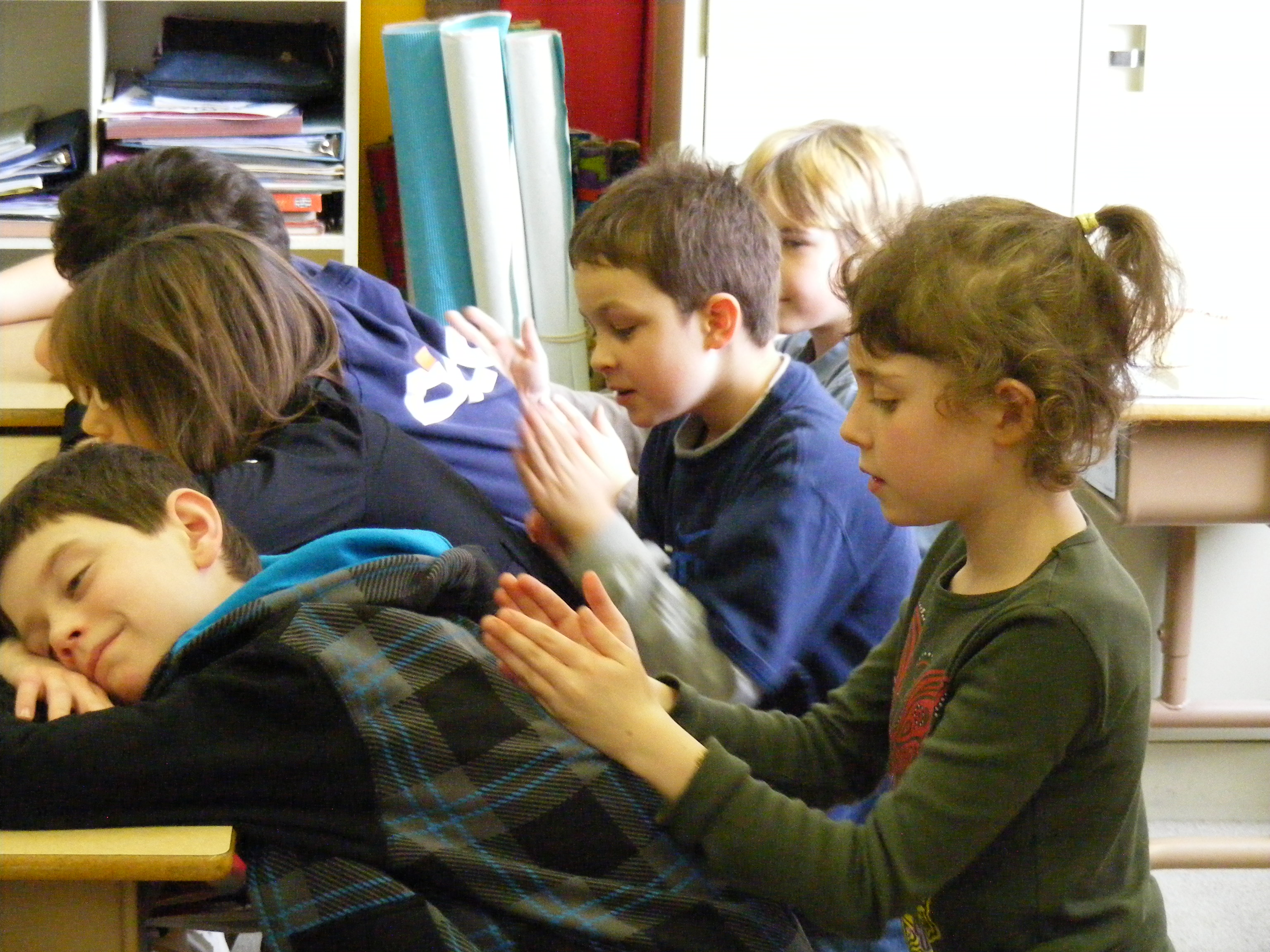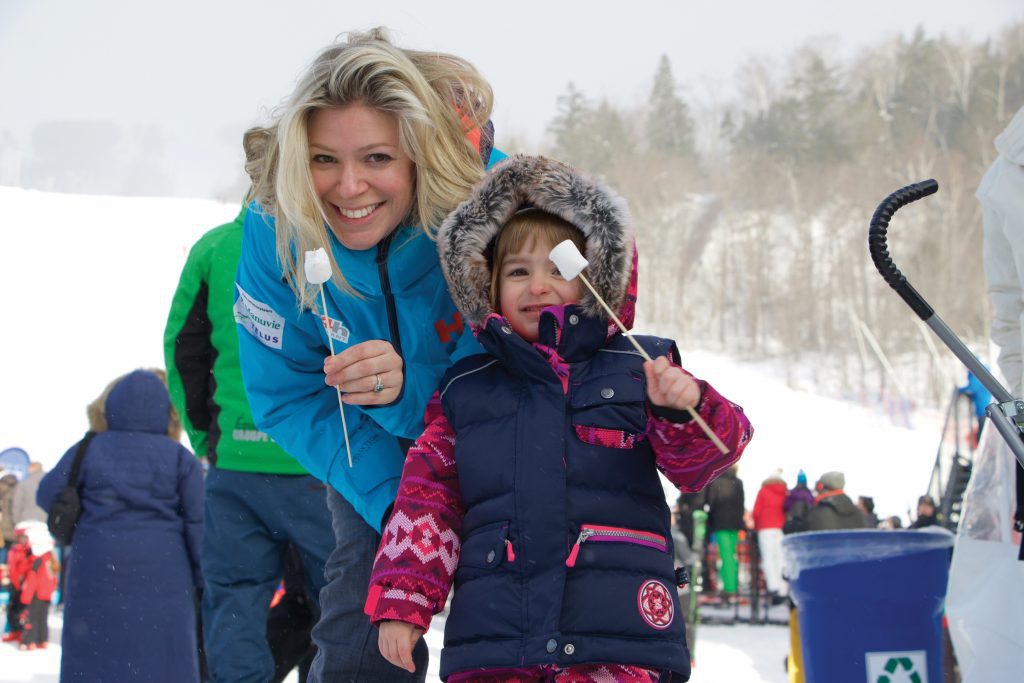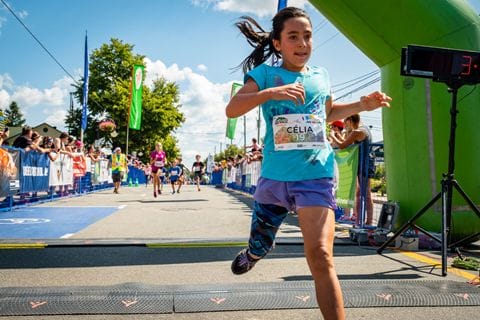Massage in the schools
by Hélène Marie Tétrault
Nowadays, it is rare for people to touch one another. Is it surprising that we are witnessing more and more drama created by ” touch-starved” individuals who have lost contact with and respect for life? We hear of abuse of all sorts, often involving women and children. The act of touching has developed a bad reputation. Indeed, there is substantial fear of physical contact in our society.

The experience of touch is essential for neural and physical development. A child learns with his or her whole body.
Mia Elmsater and Sylvie Hétu, both trainers in infant massage, responded to extended requests to adapt infant massage for older children. The Massage in Schools Programme (MISP) began in England in the year 2000. It has been recognized worldwide and is now present in 30 countries where the same routine is practiced. It provides a safe environment for children to learn and share respectful and nurturing contact.
Massage in schools provides students and teachers with a moment of relaxation and sharing. The 15 fluid movements are done over clothing and require from 10 to 15 minutes for the exchange. No adult touches a child. It is a peer massage given on the back, the head and the arms. The child asks before starting, “Do you allow me to give you a massage?” and ends the sequence by saying, ”Thank you for allowing me to give you a massage.” Touch is a privilege and the right to accept or refuse is respected. The parent’s permission is also needed before his or her child can participate. The child becomes competent in applying the routine after three to six class visits by the instructor.
Le toucher est un privilège, et le droit d’accepter ou de refuser est respecté. Les parents doivent également donner leur permission pour que leur enfant puisse participer à l’activité. Il ne faut que de trois à six interventions en classe par un instructeur pour que les enfants maîtrisent les manœuvres de la routine.
Many positive changes have been noted where massage in schools is practised.
Stress, which makes learning and creativity difficult, is reduced and there is better concentration. There is usually less noise in the classroom, more empathy and communication and less aggressiveness., The children are more aware of self and others. The HeartMath Institute has demonstrated that when people touch each other in simple gestures of friendliness, their hearts and brains go into coherence. The hormone oxytocin is secreted and creates the feeling of love.

Educators have at heart the wellbeing of our children. Mentalities are changing and examples of the benefits of nurturing and respectful touch in schools are now available. A school director in Rosemère is promoting the concept, which has now extended to St-Eustache and many other places. These schools also offer yoga and cardiac coherence as part of the program of self-development.
From my perspective, it would be good if more teachers and schools were to look into the Massage in Schools Programme and, seeing its great benefits, decide to adopt it.








0 Comments